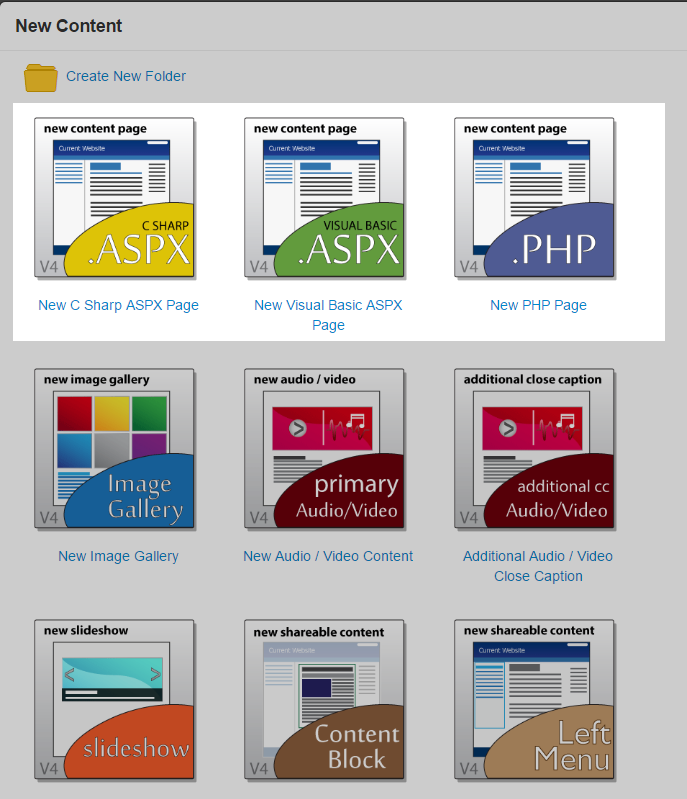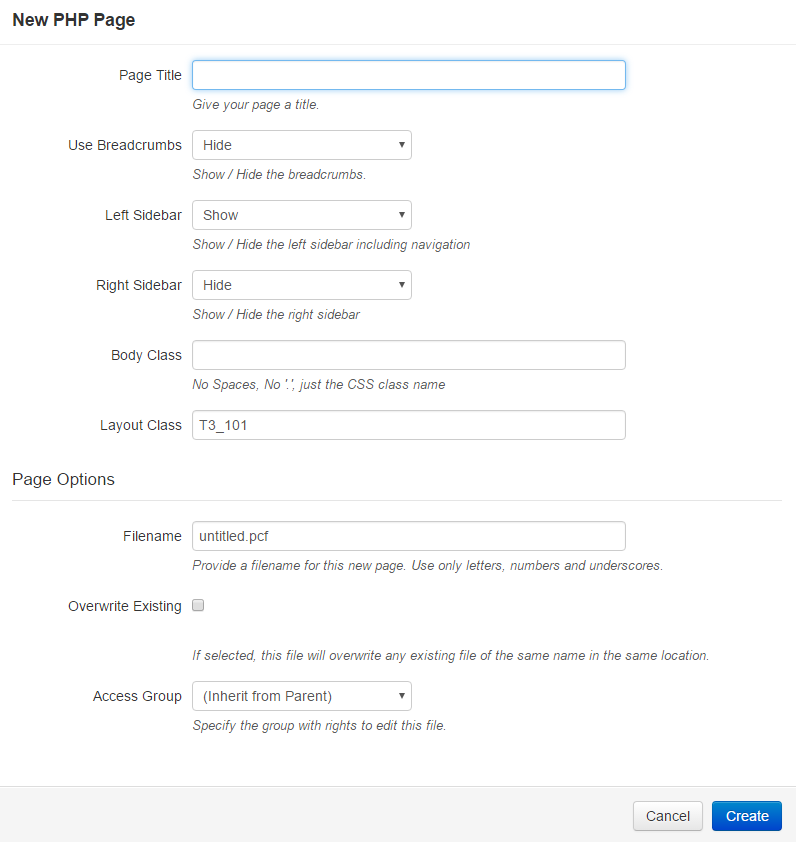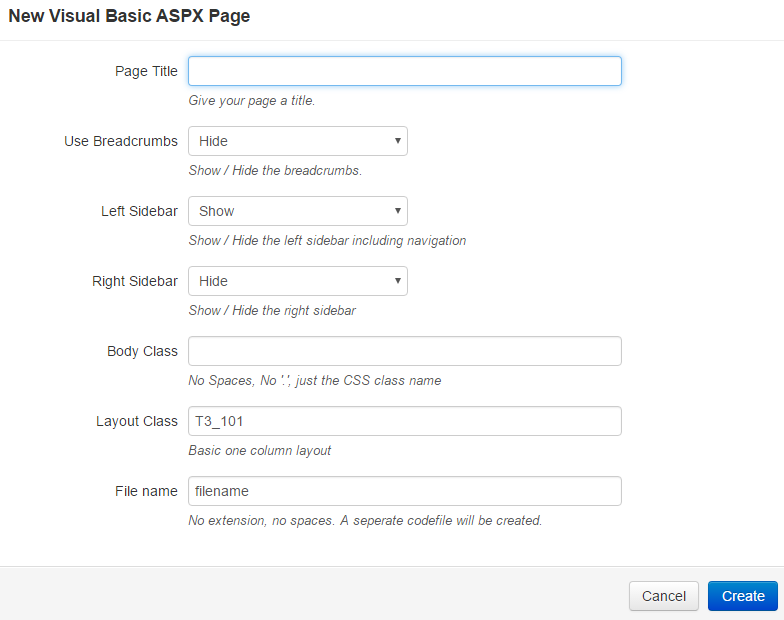Creating Web Pages
In version 4 templates we have two types of pages either PHP or ASPX (.Net). There is no benefit in using one or the other type of page as all options are built to work with both. ASPX pages come in visual basic and c-sharp code bases. If you do use a .Net page type please be aware we restrict pages from having database connections to them.
Create A New Page
![]() Like all new content items press the "New" button from within OmniUpdate's interface. There are three page types which are on the very top of the item list.
Like all new content items press the "New" button from within OmniUpdate's interface. There are three page types which are on the very top of the item list.

New PHP Pages
We highly recommend that you put a short but meaningful page title. The page title will display in bread crumbs as well as the tab space in browsers.
If you are using Google Analytics on your site you can look at content by page title so it is helpful to craft something unique for each page.
The layout class is another useful space to fill out at this point. The default class is T3_101 which is a single editable space. If your site has a structured layout which you use its easy to change it during the creation and save yourself the extra step of changing it in the page properties.
The last bit of advice is to never use spaces when creating the filename. You can make it whatever you want but it needs to have a ".pcf" extension. The page will publish as a .PHP automtically.
If you choose to make a PHP page you'll be presented with a creation wizard. The features on this are some basic settings which can help you get your page working right after you make it. Of course you can use the page properties to change settings after you've made the page.

New ASPX Pages
Every ASPX will also generate a code file which can be used to program if you would like to do that. You are not required to program anything to run ASPX but you will need to publish the code file before your page will work.
The file name for ASPX pages should not have the '.pcf' extension added to it as the wizard will take care of that for you.
We strongly suggest that you provide a short, unique page title for each new page. This will help users identify it in the tab browser and you can use Google Analytics to track page usage by page title instead of URL.
Choosing to be a visual basic or c-sharp is really just a matter of your own personal perference with programming. The creation wizard options are the same for both.

New Page Options
All page types will have a creation wizard that allows you to setup the page before it gets created. These options are listed below along with an explaination on how it is used on the page. These options, except the page's file name, can be changed using the page properties.
| Option | How Its Used | PHP | VB | C# |
| Page Title | Unique name for the page which should be short. Text reable so spaces are okay. This is used in bread crumbs, the tab name within browsers, and can even be used in analytics to help you track usage by page title. |
x | x | x |
| Use Breadcrumbs | Hide or Show values. Defaults to hide but you can set to show and it will automatically update as pages change within the breadcrumb trail. | x | x | x |
| Left Sidebar |
Hide or Show values. Defaults to show but you can set to hide. If you do hide the left sidebar you will not display the left navigation even if its set to show the menu. | x | x | x |
| Right Sidebar | Hide or Show values. Defaults to hide but you can set to show. The right sidebar is extra content holders which do not effect how the main content layout is set. | x | x | x |
| Body Class | Free text field which allows you to add class information to the entire BODY element on the webpage. If you are unsure what to do you can leave this blank | x | x | x |
| Layout Class | This class is critical to your entire page design. Check out the page layouts that you are currently using on your site, or if you are looking for something new go through the page layouts section of this site. | x | x | x |
| File Name ASPX |
This can be anything you would like but please do not use spaces or special characters. The name that you give it will be the name in the url with a .aspx when you publish. In the case of ASPX files you should exclude the ".pcf" when creating your file name. | x | x | |
| File Name PHP | This can be anything you would like but please do not use spaces or special characters. The name that you give it will be the name in the url with a .php when you publish it. When creating this name on the wizard it requires that you include the ".pcf" at the end of the file. | x | ||
| Override Exisiting | This checkbox can be checked if you plan to replace an exisiting page within the folder with a new page using the same name. The default is unchecked. | x | ||
| Access Group | If you are managing your site via groups then you can set the page to be only edited by that group. The default is to inherit from parent which is generally the folder level permissions. If the group you want to use has not been created you can come back and set the premissions at a later time. | x |
Working with Web Pages
Once you're done creating your page type you can start to add content to your new page. We have two useful sections on this website to guide you through content editing and page properties that work hand in hand to help you craft the best looking page you can.
